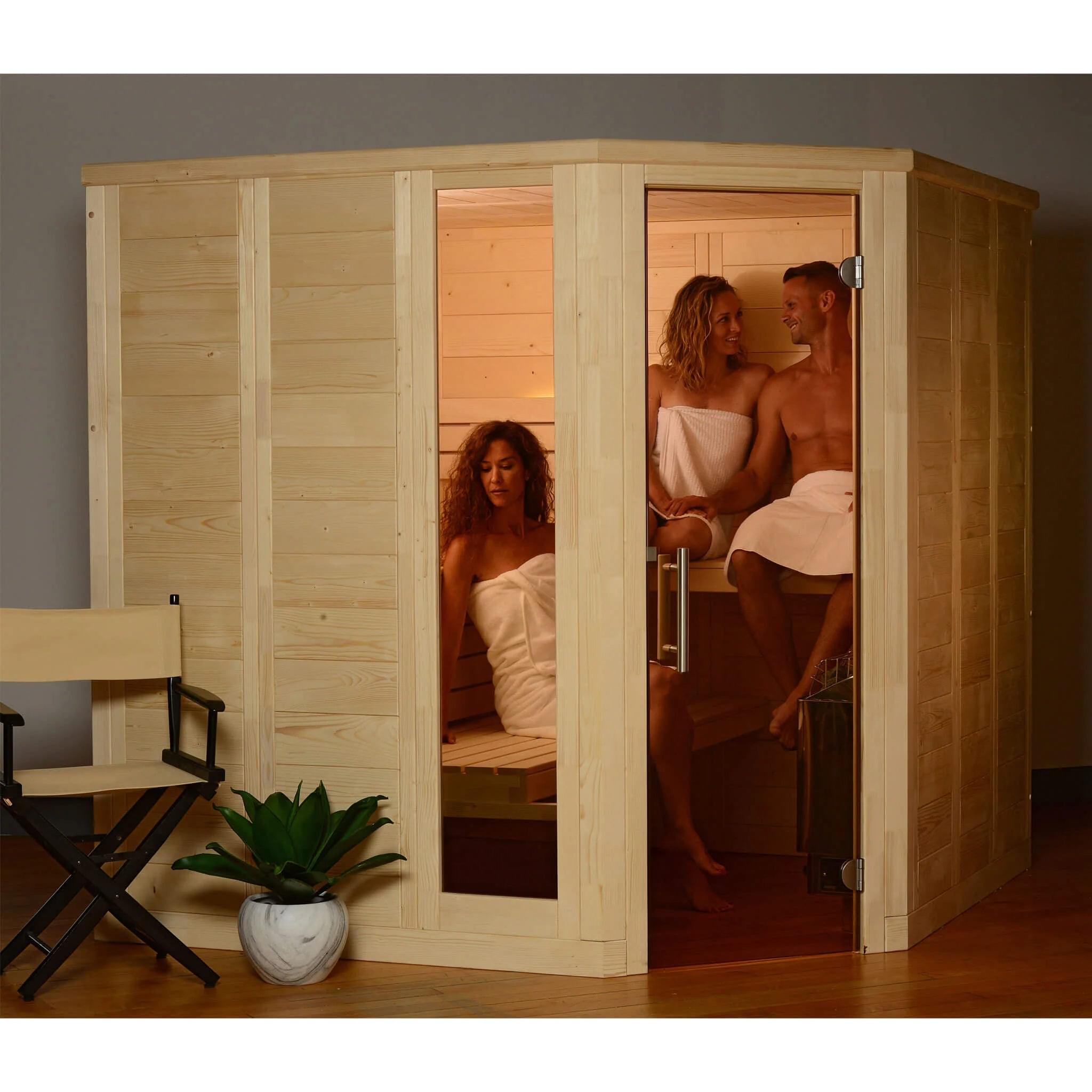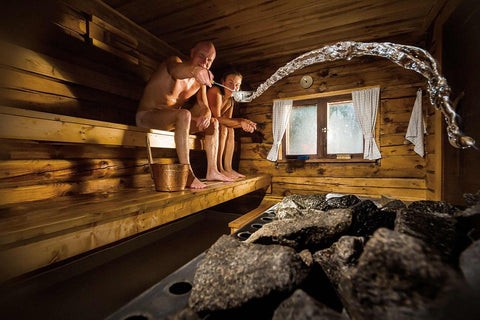Getting The Traditional Sauna To Work
Getting The Traditional Sauna To Work
Blog Article
Facts About Traditional Sauna Uncovered
Table of ContentsNot known Facts About Traditional SaunaThe 5-Minute Rule for Traditional SaunaNot known Details About Traditional Sauna All About Traditional SaunaThe Facts About Traditional Sauna Revealed
Power financial savings is something to consider for people who intend on using their sauna often. For a typical sauna, bathers generally need to wait on 30-40 mins for the space to pre-heat before getting in. Infrared saunas, on the other hand, commonly reach their perfect temperature level in about 15 mins.That indicates that in an infrared sauna, bathers can begin enjoying their sauna immediately. One distinction in between the two types of sauna that is frequently forgotten is the social experience.

Traditional Sauna for Beginners

Attempt a sauna today and find a few of the remarkable benefits on your own!.

Factors such as warm resistance, wanted level of detoxification, and total health needs to be taken into consideration when deciding which sort of sauna to make use of. Infrared saunas are a sort of sauna that use infrared light to heat the body straight, as opposed to heating up the air around the body like typical saunas.
Traditional Sauna - An Overview
The temperature level in an infrared sauna is commonly less than in a typical sauna, with temperature levels ranging from 120F to 150F. Infrared saunas provide a variety of advantages that make them an attractive alternative for those looking to enhance their wellness and wellbeing. Several of the advantages of infrared saunas consist of: Infrared saunas utilize reduced temperatures than typical saunas, which can make them much more comfy for those that find high temperature levels tough to endure.
This can aid to advertise relaxation, decrease muscular tissue stress, and eliminate pain. Some experts recommend that infrared saunas may offer advantages for calming a sore throat. Infrared saunas have been shown to help the body eliminate contaminants via sweating. Sweating can also assist to enhance skin health by eliminating impurities and dead skin cells.
The heat produced by infrared saunas can assist to enhance blood circulation and enhance flow. Infrared saunas have been shown to read the article help reduce stress and anxiety and advertise leisure.
With their reduced temperatures, deep infiltration, and range of health and wellness benefits, infrared saunas are a wonderful way to loosen up, unwind, and boost your total health. Typical completely dry saunas have been around for centuries and are still prominent today. They are usually heated with wood, gas, or electricity and have reduced humidity levels.
How Traditional Sauna can Save You Time, Stress, and Money.
There are several benefits to using a conventional dry sauna. Here are a couple of: Leisure: The high temperature and low humidity in conventional dry saunas can help relax the muscles and minimize stress levels. Detoxing: Sweating in a sauna can aid get rid of toxins from the body, which can boost total health.
When it comes to saunas, there are 2 main kinds of home heating approaches: traditional and infrared. Standard saunas make use of warmed air to heat the body, while infrared saunas make use of infrared radiation to pass through the skin and warmth the body from within. Among the primary distinctions between both techniques is the type of heat they create.
Conventional saunas heat the air, which after that heats up the body through convection. Infrared saunas, on the other hand, heat the body straight via radiation.
In visit our website regards to power efficiency, infrared saunas are generally extra reliable than standard saunas because they call for much less power to operate. They also heat up faster, so they can be used for much shorter sessions. Traditional Sauna. When it involves the effects on the body, both kinds of saunas have actually been shown to have advantages
The Basic Principles Of Traditional Sauna
Infrared saunas have been shown to have comparable advantages, as well as potentially aiding with detoxing, skin health and wellness, and immune feature. Generally, the choice between a conventional or infrared sauna comes down to individual preference and individual requirements. Standard saunas might be much better for those who choose greater temperature levels and a more extreme sweat response, while infrared saunas may be better for those who want an even more mild and reliable heat treatment.
Both sorts of saunas supply distinct advantages and drawbacks that ought to be thought about anchor prior to deciding. The selection in between an infrared sauna and a conventional dry sauna mainly depends upon individual preference and the preferred benefits. Those who choose a more comfortable, reduced temperature environment might favor an infrared sauna, while those that are searching for intense warm and a standard sauna experience might like a standard dry sauna.
Right here are some security suggestions to keep in mind when utilizing infrared and typical dry saunas:: Saunas can create too much sweating, bring about dehydration. It is necessary to consume alcohol lots of water previously, throughout, and after sauna sessions to stay hydrated.: It is suggested to limit sauna sessions to 20-30 minutes to avoid getting too hot and dehydration.
Report this page